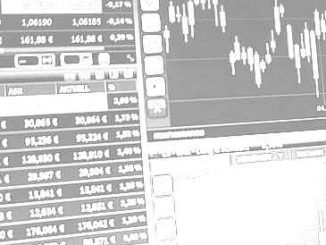The car industry in Europe, parts of Asia and the US came within days of grinding to a halt this month and was only saved by a rapid retreat by the same Dutch government which triggered the crisis in the first place. Lurking in the background when the Dutch first struck were US agents who gave the Dutch an offer they couldn’t refuse. And who said business news can’t be exciting? It is the latest chapter in The Chip War – an epic struggle that will help determine the world we will soon live in.
Eugene Doyle is a writer based in Wellington. He has written extensively on the Middle East, as well as peace and security issues in the Asia Pacific region. He hosts the public policy platform solidarity.co.nz.
In various press releases, the Dutch government was adamant: there was no US involvement in its decision to seize Nexperia, a major supplier of semi-conductors to the automotive industry headquartered in the Netherlands but owned by a Chinese company. Nexperia’s parent company, Wingtech Technology is on the US’s Entity List of companies that the US deems a threat to US national interests. This was central to what happened next.
On 30 September, citing national security and deploying a 1950 Cold War piece of legislation, the Goods Availability Act, the Dutch government issued an order to eject the Chinese chairman and executive director and take direct control of the company. The US Commerce Department had issued a new rule that same day, expanding the Entity List to include subsidiaries of any company already on the list.
Coincidence? The Dutch Economic Affairs Ministry released statements saying the timing was “purely coincidental”. But I have read the summary document of the ruling of the Court of Appeal in Amsterdam which found in favour of the government’s actions; it is in black and white: US officials threatened dire consequences if the Dutch didn’t move against the Chinese owners.
The court’s summary describes a meeting between officials of the Dutch Ministry of Foreign Affairs and the US Bureau of International Security and Nonproliferation in which the Americans made clear the Chinese CEO “will have to be replaced to qualify for the exemption from the Entity List.” The Americans also expressed frustration at the lack of progress in getting the Chinese to divest.
To be fair, the Dutch have legitimate concerns as the court’s summary document makes clear: “It is important to note that the State argued that the business operated by Nexperia is essential to the economic security of the Netherlands and Europe, while crucial business processes, goods, and knowledge were at risk of being lost in the very short term due to relocation to locations outside Europe.”
Nexperia is owned by Guangdong-based Wingtech Technology which, in December 2024, was placed on the US Entity List. The main reason Wingtech got on the list was … they purchased Nexperia from the Dutch! In other words, the US, as part of its coercive containment strategy was giving the Dutch an offer they couldn’t refuse: get the Chinese to divest or we will ban Nexperia from the US and crush the company with a range of sanctions. One should recall the Huawei ban and the US muscling Taiwan’s chip maker TSMC to not sell high-end chips to China; this is just the latest move in many such pressure campaigns.
A counter-strike of epic proportions
What happened next, however, was a counter-strike of epic proportions and global implications.
Back in China, Wingtech Technology, decoupled their production facilities in Guangdong from Nexperia’s Nijmegen (Netherlands) headquarters. Simultaneously, the Chinese government issued an export block halting all future sales of components by the company, requiring those chips to be sold exclusively on the domestic Chinese market. Combined, these two moves set off a contagion of panic attacks amongst automotive executives in Europe, America and Asia.
Nexperia chips drive millions of cars
CNBC reported on 1 November: “For now, the auto industry’s supply chain hangs in the balance, threatening vehicle production worldwide as companies warn of looming shortages of the chipmaker’s components.”
Nissan CEO Ivan Espinosa told CNBC that the company is setting aside a 25 billion yen provision for supply risks, to “absorb” the impact from the crisis.
Nexperia makes millions of transistors, diodes and power management components that are essential to cars produced by BMW, Honda, Hyundai, Mercedes-Benz, Nissan, Renault, Stellantis, Volkswagen, Volvo and many others. Car windows open, sensors detect objects, braking systems respond, air bags deploy and entertainment systems work because of these chips. These vehicles typically have dozens, sometimes over 100, Nexperia parts in them. About 70% of the chip’s final value is added in China, the rest mainly in the Netherlands and UK.
The car industry relies on just-in-time delivery systems where components flow in a steady, carefully choreographed way across continents – which is highly efficient but relies on dependable supply chains; the Dutch, working with the US, decided to throw a hand grenade into the system. The Dutch wanted to increase control of a critical piece of the semiconductor supply chain (understandable, but appallingly executed); the Americans wanted to damage the Chinese as part of the broader Chip War.
Dutch courage falters
In early November the South China Morning Post reported that China’s commerce ministry had agreed to a Dutch request to send over a team for negotiations.
Then suddenly on November 7 Reuters reported ‘Netherlands ready to drop control of Nexperia if chip supply resumes.’
It was a humiliating back-down by the Dutch government but the implications for the EU were enormous. Depending on what lessons have been learnt, the reprieve may only be temporary.
The Chip War and the weaponization of the pillars of the global economy
European industry is in a terrible state, stuck between a hammer and an anvil. At the very time the US is trying to hurt China’s tech industry, it is also determined to gut as much European manufacturing as possible – through mechanisms like the Inflation Reduction Act (IRA) which grants hundreds of millions of dollars in subsidies and tax credits to companies which move production from Europe to the US. Volkswagen, BMW, Northvolt and Freyr Battery are just a few which have done so to the detriment of Europe.
Europe is struggling under energy costs 150% higher than the US, disjointed policies across the EU and, according to the Germany’s Chamber of Commerce, a seemingly irreversible deindustrialisation crisis. It has no coherent plan to create a vertically integrated tech industry that can create a level of independence from the two behemoths. The Nexperia debacle was just the latest chapter in the Chip War and a clear demonstration of Europe’s weakness.
The Chip War is ramping up
We have lived through some astonishing moments in the chip war. The Huawei Ban (2018-) was meant to cripple China’s rising tech star; instead it acted as a tremendous spur for China to invest hundreds of billions of dollars into rapidly catching up with the US and dispensing with their products. Case in point: US semi-conductor giant Nvidia’s once-dominant presence in China has collapsed to zero, in large part thanks thanks to US sanctions on China which began in 2022 and culminated in China itself banning purchases of Nvidia chips by state-backed firms in 2025.
Responding to the China challenge Washington launched the CHIPS and Science Act (2022), a $280 billion plan to onshore semiconductor manufacturing and boost AI, quantum computing, robotics and other applications. The second Trump administration has given the sector additional financial boosts.
In 2023 as part of a US policy of “coercive containment” the Dutch were forced by the US to block their own biggest company ASML from selling its most advanced lithography machines to its biggest customer – China. It cost the Dutch hundreds of millions of Euros … but anything to please Uncle Sam.
I could go on but what is clear is that the Chip War has exposed how fragile the global semiconductor supply chain is when superpowers lock horns. Now that we have fully returned to gangster capitalism and the US is squeezing friend and foe alike, we have the added complexity that the Chinese have reached a critical economic and geopolitical moment where they can show just how much they have learnt of how to conduct business from their American tutors.





To be honest, I am Dutch. And to be honest, as China I would keep the company split and let the headquarters be just that: a headquarters without production facilities, quite reflecting the hubris of Dutch leadership and European leadership in general. And hopefully, the garden will learn to be a part of the world, instead of being its bully.